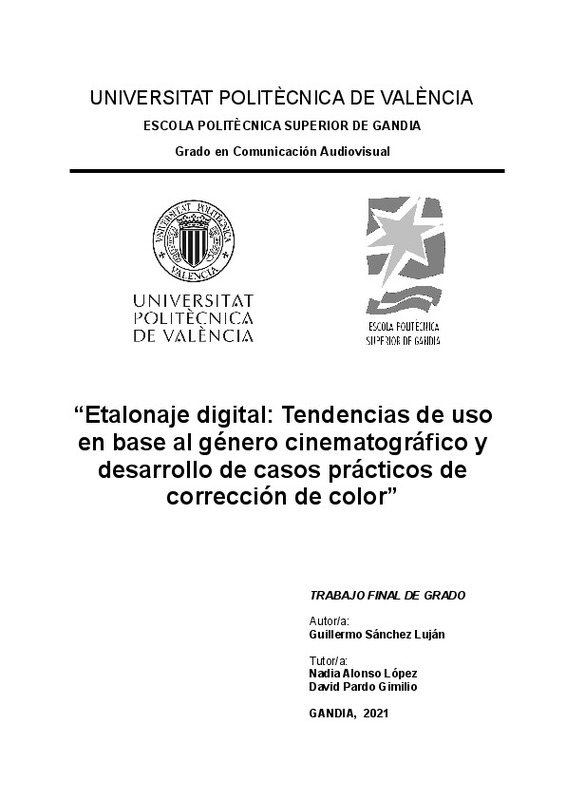JavaScript is disabled for your browser. Some features of this site may not work without it.
Buscar en RiuNet
Listar
Mi cuenta
Estadísticas
Ayuda RiuNet
Admin. UPV
Etalonaje digital: Tendencias de uso en base al género cinematográfico y desarrollo de casos prácticos de corrección de color.
Mostrar el registro completo del ítem
Sánchez Luján, G. (2021). Etalonaje digital: Tendencias de uso en base al género cinematográfico y desarrollo de casos prácticos de corrección de color. Universitat Politècnica de València. http://hdl.handle.net/10251/176034
Por favor, use este identificador para citar o enlazar este ítem: http://hdl.handle.net/10251/176034
Ficheros en el ítem
Metadatos del ítem
| Título: | Etalonaje digital: Tendencias de uso en base al género cinematográfico y desarrollo de casos prácticos de corrección de color. | |||
| Autor: | Sánchez Luján, Guillermo | |||
| Director(es): | ||||
| Entidad UPV: |
|
|||
| Fecha acto/lectura: |
|
|||
| Resumen: |
[ES] En este trabajo se realizará un estudio de las tendencias de uso del color habituales desde la llegada del etalonaje digital en diferentes géneros cinematográficos, según el establishment norteamericano. Qué características ...[+]
[EN] In this paper, we are going to study the usual trends in the use of color in different film genres according to the North American establishment since the arrival of digital color grading. Which characteristics does ...[+]
|
|||
| Palabras clave: |
|
|||
| Derechos de uso: | Reconocimiento - No comercial (by-nc) | |||
| Editorial: |
|
|||
| Titulación: |
|
|||
| Tipo: |
|
recommendations
Este ítem aparece en la(s) siguiente(s) colección(ones)
-
EPSG - Trabajos académicos [5023]
Escuela Politécnica Superior de Gandia







